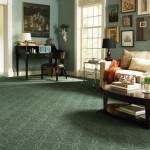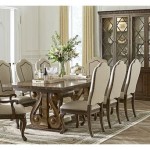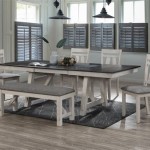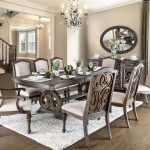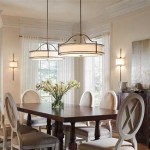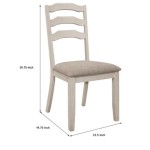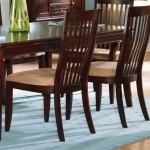Beach House Dining Room Sets: Creating Coastal Ambiance
The dining room serves as a central gathering space in any home, but in a beach house, it takes on a particularly vital role. It becomes a hub for sharing meals after long days spent in the sun, recounting seaside adventures, and enjoying the relaxed atmosphere that coastal living provides. Choosing the right dining room set is crucial for establishing the desired ambiance and functionality. A well-selected beach house dining room set will not only complement the surrounding décor but also withstand the unique challenges presented by a coastal environment, such as moisture and sunlight.
Selecting a beach house dining room set involves considering several factors, including material durability, style coherence, size appropriateness, and overall comfort. The ultimate goal is to create a space that is both visually appealing and practical for everyday use. This article explores key aspects of choosing a beach house dining room set, offering guidance on materials, styles, and considerations for long-term enjoyment.
Durability and Material Selection
Coastal environments pose unique challenges to furniture, primarily due to humidity, salt air, and intense sunlight. Therefore, the materials used in a beach house dining room set must be carefully considered for their durability and resistance to these elements. Choosing inappropriate materials can lead to premature wear and tear, resulting in costly replacements.
Solid wood remains a popular choice for dining room furniture due to its natural beauty and inherent strength. However, not all woods are equally suitable for coastal environments. Hardwoods like teak, acacia, and mahogany are naturally resistant to moisture and decay, making them excellent choices. These woods contain natural oils that repel water and protect against insect infestation. While these hardwoods are more expensive than softer options, their longevity and durability make them a worthwhile investment for a beach house.
Softwoods, like pine, can also be used, but they require proper sealing and finishing to protect them from moisture. Regular maintenance, including applying sealant or varnish, is crucial to prevent warping, cracking, and rot. Consider using exterior-grade finishes that contain UV inhibitors to protect the wood from sun damage, which can cause fading and discoloration over time.
Metal is another viable option for beach house dining room sets, particularly for table bases and chair frames. Aluminum and stainless steel are excellent choices due to their resistance to rust and corrosion. Powder-coated finishes provide an additional layer of protection and can be customized to match the desired aesthetic. Wrought iron can also be used, but it requires regular maintenance to prevent rust. Applying a rust-resistant primer and paint can help prolong its lifespan in a coastal environment.
Rattan and wicker are lightweight and aesthetically pleasing materials that can evoke a relaxed, beachy vibe. However, natural rattan and wicker are susceptible to moisture damage. Synthetic rattan and wicker, made from materials like polyethylene, are significantly more durable and resistant to the elements. These materials are designed to withstand outdoor conditions, making them a suitable choice for a beach house dining room, especially if the space opens onto a patio or deck.
For tabletop surfaces, consider materials like tempered glass or resin. Tempered glass is durable, easy to clean, and resistant to scratches. It also allows for natural light to pass through, creating a bright and airy feel. Resin tabletops can be customized with various finishes and embedded with decorative elements, such as seashells or sand, to enhance the coastal theme. Both materials are relatively low-maintenance and can withstand the rigors of daily use.
Style Considerations for Coastal Cohesion
The style of the dining room set should complement the overall aesthetic of the beach house. Coastal décor typically emphasizes light, airy, and natural elements. Choosing a dining room set that aligns with these principles will create a cohesive and harmonious space. Several styles are particularly well-suited for beach houses, each offering a unique take on coastal living.
The classic coastal style often incorporates elements like white-washed wood, natural fabrics, and nautical accents. Dining tables with distressed finishes and chairs upholstered in linen or cotton can evoke a sense of timeless elegance. Consider incorporating nautical-themed accessories, such as rope accents, seashell centerpieces, or artwork depicting seascapes.
A more modern coastal style emphasizes clean lines, minimalist design, and a neutral color palette. Dining tables with sleek metal bases and chairs with simple, geometric shapes can create a contemporary look. Opt for colors like white, gray, and light blue, and incorporate natural materials like wood and glass to add warmth and texture. Abstract art and sculptural accents can enhance the modern aesthetic.
For those seeking a more rustic and natural look, a farmhouse coastal style can be an excellent choice. This style combines the charm of farmhouse décor with coastal elements. Dining tables made from reclaimed wood and chairs with woven seats can create a warm and inviting atmosphere. Incorporate natural textures like jute rugs, woven baskets, and driftwood accents to enhance the rustic feel.
The bohemian coastal style is characterized by its eclectic mix of patterns, textures, and colors. Dining tables with intricate carvings and chairs with vibrant upholstery can create a playful and artistic space. Incorporate elements like macramé wall hangings, colorful throw pillows, and unique lighting fixtures to enhance the bohemian vibe. This style allows for a more personalized and expressive approach to coastal décor.
When selecting a dining room set, consider the size and scale of the room. A large, bulky dining table can overwhelm a small space, while a small, delicate set may look out of place in a large, open-concept dining room. Measure the dimensions of the room carefully and choose a dining set that is appropriately sized. Also, consider the shape of the table. Round tables are ideal for smaller spaces and promote conversation, while rectangular tables are better suited for larger groups and formal dining.
Comfort and Functionality in a Coastal Setting
While aesthetics are important, the comfort and functionality of the dining room set should not be overlooked. The dining room is a space for gathering and enjoying meals, so it’s important to choose a set that is both comfortable and practical for everyday use. Comfortable seating is essential for creating a welcoming and enjoyable dining experience.
Consider the height of the chairs in relation to the table. The chairs should be high enough to allow for comfortable dining but not so high that they are difficult to get in and out of. Look for chairs with supportive backs and cushioned seats. Upholstered chairs can provide extra comfort, but be sure to choose fabrics that are durable, stain-resistant, and easy to clean. Outdoor fabrics, such as Sunbrella, are an excellent choice for beach house dining rooms, as they are designed to withstand moisture, sunlight, and stains.
The functionality of the dining table is also an important consideration. If the dining room is used for a variety of purposes, such as working, crafting, or playing games, choose a table that is versatile and durable. Tables with extendable leaves can be useful for accommodating larger groups. Consider the material of the tabletop. Smooth surfaces are easy to clean and ideal for dining, while textured surfaces can add visual interest but may be more difficult to wipe down.
Storage is another important aspect of functionality. Consider incorporating storage solutions into the dining room, such as a buffet, sideboard, or hutch. These pieces can provide additional storage for dishes, linens, and other dining essentials. They can also serve as decorative elements, adding to the overall aesthetic of the room. Choose pieces that complement the style of the dining room set and offer ample storage space.
Lighting plays a crucial role in creating the right ambiance in the dining room. Consider incorporating a combination of ambient, task, and accent lighting. A chandelier or pendant light above the dining table can provide ambient lighting, while recessed lighting or sconces can provide task lighting. Table lamps or floor lamps can add accent lighting and create a warm and inviting atmosphere. Choose lighting fixtures that complement the style of the dining room set and provide adequate illumination.
Finally, consider the overall maintenance requirements of the dining room set. Beach houses are often subject to sand, salt, and moisture, so it’s important to choose a set that is easy to clean and maintain. Regular cleaning with a mild soap and water solution can help prevent the buildup of dirt and grime. Applying a protective coating to wooden furniture can help prevent moisture damage. And using placemats and coasters can help protect the tabletop from scratches and stains.

10 Ways Create A Coastal Beach House Dining Room Home Blog

Grace Gratitude Dining Room Modern Coastal Ethan Allen

17 Most Inspiring Coastal Dining Rooms

Coastal Living By Universal Furniture Getaway Dining Table Layla Grayce

Blue And White Coastal Dining Room The Lilypad Cottage

How To Decorate A Coastal Dining Room With Color And Textiles

Beach Style Dining Room Coastal San Francisco Houzz

Beach House Dining Room Roundup With Fabulous Tables

Get The Look Coastal Modern Dining Room

Dining The Beach Furniture

